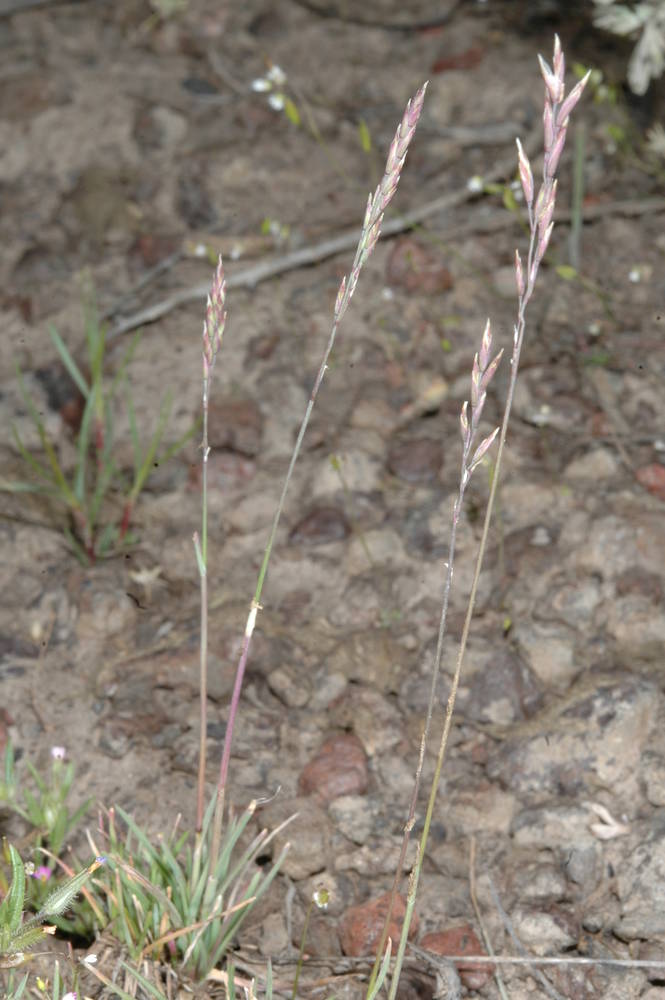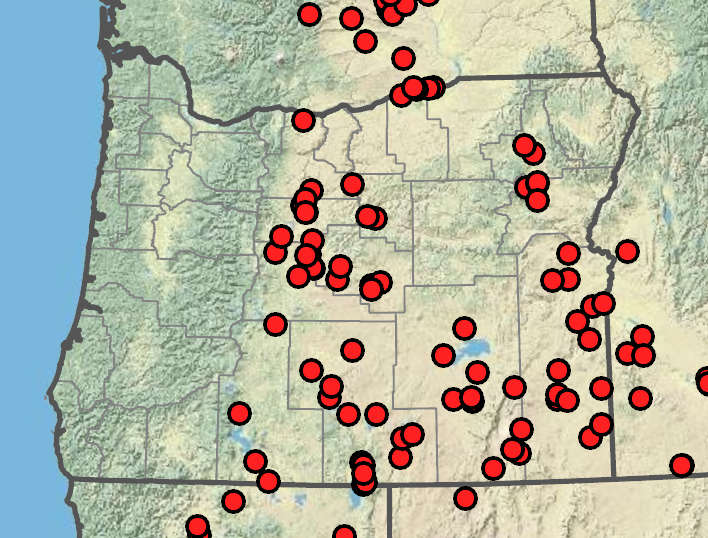Muhlenbergia asperifolia
Poaceae
alkali muhly, scratchgrass
grass family
with bases somewhat compressed-keeled;
internodes glabrous; shiny below the nodes.
usually herbaceous; erect to sprawling;
internodes hollow or solid;
nodes prominent and usually swollen.
blades 2–7(11) cm × 1–2.8(4)mm; flat, occasionally conduplicate;
lower surface smooth or minutely scabrous;
upper surface minutely scabrous;
margins and midveins not conspicuously thickened; greenish;
tips acute.
alternate, 2-ranked; each consisting of a sheath that encircles the culm and a blade;
sheaths open or closed with margins fused for much or all of their lengths;
auricles present or absent;
ligules usually present at the sheath-blade junction; on the side toward the culm, membranous or of hairs, rarely absent;
blades usually linear to lanceolate with parallel veins.
6–21 × 4–16 cm, broadly ovoid; open;
branches whitish;
primary branches 3–12 cm × 0.05–0.1 mm; capillary; lower branches spreading, not appearing clustered;
pedicels 3–14 mm; longer than the spikelets.
usually complex aggregations of spikelets into panicles; racemes, or spikes, usually with a main axis;
spikelets usually supported on pedicels;
disarticulation above or below the glumes, usually beneath each floret, sometimes in or below the inflorescence axis.
1.2–2.1 mm.
consisting of 2 glumes subtending 1–many florets arranged on either side of the rachilla, laterally or dorsiventrally compressed, occasionally round in cross section.
equal, 0.6–1.7 mm, 1-veined; purplish, minutely scabrous particularly on the veins;
tips acute.
(0)2, with an odd number of veins, sometimes awned.
(0)3(6).
usually bisexual, sometimes pistillate, staminate or sterile, usually consisting of a lemma and palea with the flower between them; the flower itself reduced to stamens; a pistil; and 2 lodicules.
usually a caryopsis.
1.2–2.1 mm, lanceolate to oblong-elliptic; somewhat gray, glabrous; smooth, occasionally minutely scabrous near the tips;
tips acute; awnless or mucronate; the mucros to 0.3 mm.
usually with an odd number of veins, awned or awnless, with calluses;
lemma awns; if present, arising at the tip; along the back or near the base, sometimes curved; bent, or twisted.
1–1.3 mm; greenish yellow to purplish at maturity.
usually 2-keeled, often with additional veins.
=20, 22, 28.
Muhlenbergia asperifolia
Poaceae
Moist, alkaline meadows. 100–1500m. BR, BW, Col, ECas, Lava, Owy. CA, ID, NV, WA; north to British Columbia, northeast to Ontario, southeast to TX, south to Mexico. Native.
Cosmopolitan. Approximately 700 genera; 99 genera treated in Flora.
With approximately 11,000 species, Poaceae is the fourth largest plant family in the world and the most economically and ecologically important. Grasses grow in most terrestrial habitats and are dominant or co-dominant in grasslands and savannas. The world’s major grain crops are grasses, including corn, rice, wheat, barley, sorghum, millet, oats, and rye. Some grass species are serious weeds, threatening natural ecosystems, harming livestock, and competing with cultivated crops. Arundo donax, giant reed, has spread very locally from ornamental plantings in Jackson County. Plants are strongly rhizomatous; culms (2)3–10m tall, 2+cm wide near the base; leaves 30–100 × 2–7(9)cm; inflorescence a fluffy panicle; lemmas 8–12 mm with hairs 4–9 mm. Efforts are being made to eradicate this population. It is an invasive weed in California. The following identification hints may be helpful when keying within this family: If the inflorescence is a dense spike, break the inflorescence axis to isolate a node and count the spikelets attached there. Spikelet and lemma measurements exclude the awns. To determine spikelet compression, break off a single spikelet and lay it down. If both glumes are visible at the same time, it is laterally compressed. If only one glume is visible, it is dorsiventrally compressed.
Barbara Wilson, Richard Brainerd, Nick Otting
- Local floras:
BC,
CA,
OR,
WA
- Local Web sites:
CalFlora,
CalPhotos,
Flora NW,
PNW Herbaria
WildflowerSearch
iNaturalist (observations)
USDA Plants Database
- LBJ Wildflower Center
- SEINet
- Plants of the World Online
- Encyclopedia of Life
- Wikipedia
- Google Image Search
- Local floras:
OR
- Local Web sites:
Flora NW,
PNW Herbaria
WildflowerSearch
iNaturalist (observations)
- LBJ Wildflower Center
- SEINet
- Plants of the World Online
- Encyclopedia of Life
- Wikipedia
- Google Image Search




